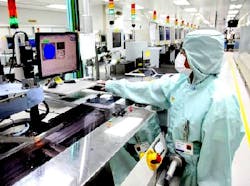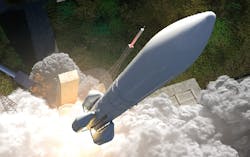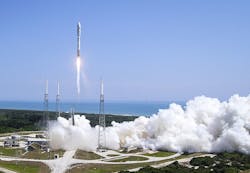COTS in space: Addressing obsolescence, part II
ByDan Friedlander
Retired following 44 years in component engineering
The consumer’s hunger for more functionality and ease of operation pushes research and development (R&D) staffs to innovate, making their innovations a primary competitive factor. At the same time, consumer demand requires that the latest and best advancements be integrated into devices as rapidly as possible. The component manufacturer, benefiting from the technological development and motivated businesswise, produces new advanced products. Obsolescence is in large part a response to consumer demand for a continual flow of electronic products that offer new capabilities and features. Additionally, the consistent upgrading of products helps stimulate the economy.
The above mechanism is a combination of technology, business and human social behavior. Hopefully, it is a fleeting trend! The negative effect of the above is disposal of the old products and contribution to the flourishing counterfeit "industry."
Read "COTS in space: Addressing obsolescence, part I" now
before proceeding with part II below.
Planned obsolescence
Planned obsolescence or built-in obsolescence is a business strategy in which the obsolescence of a product is designed into it from its conception. The rationale behind the strategy is to generate long-term sales volume by reducing the time between repeat purchases.
There are arguments about the planned obsolescence being myth or reality. The fact is that countries (like France) legislated laws punishing those found practicing it.
Anyway, often, people argue that COTS components are designed for short life, according to their target application. This is fallacy meant to downgrade COTS. There are some solid counter arguments against artificial life shortening at component level, including:
· COTS, as per their definition, are intended for sell to the general public.
· The component manufacturer usually does not know where and how its products are used.
· The component manufacturer's reputation is at stake.
· In many cases, different grades of the same component are built using identical die and/or package.
Saying that, it does not mean that all COTS produced by all manufacturers are the same quality and reliability.
Obsolescence mitigation
Governments and industries are more and more aware of obsolescence problems. Many reactive and proactive mitigation actions have been developed to manage the obsolescence issue. It is beyond the scope of this article to address in detail the available mitigation methods, life-cycle forecasting models, experts and companies specialized in obsolescence management, obsolescence management standards, etc.
I will confine to the lessons learned during my multi-year dealing with EEE components for space and military applications, including extensive use of space- and military-grade COTS.
Strong EEE components standardization (components types reduction).
Standardization is a very efficient way to deal with obsolescence.The component/component manufacturer selection is a multidisciplinary, complex process, led by component engineering.
without the information provided by the traditional mil regime the component/component manufacturer selection process for COTS has to rely very heavily on pragmatic engineering judgment.
The selection activity is synchronized with the designers' needs. However, the designer is freed from dealing with the various aspects of the component selection. Free creativity (nice to have) in using any component found in the market, is not compatible with the present global developments.
The above practiced methodology did not lead to obsolescence immunity. However, absolutely and compared to similar companies, the obsolescence hit has been efficiently minimized.
Obsolescence management
In parallel, use of commercially available obsolescence database allowed Standard and Projects (in development and in manufacturing) Parts Lists (BOMs) continuous monitoring for obsolescence detection. The database has been used also in the component/component manufacturer selection phase. Detecting obsolescence on time is followed by a decision what to do (last time buy, bridge buy, redesign etc.).
Design
Strategic level management requires planning for obsolescence (this is not the term "planned obsolescence", but it is planning to avoid “obsolescence". Using the output of the above-mentioned component/component manufacturer selection process, systems must be designed for obsolescence. For example, prefer using field-programmable gate array (FPGA)-based technologies to make systems simpler. Procedures are in place for redesign decision making.
Procurement strategy
As a small volume space/military buyer, the company tries (within the obvious limitations) to align itself with preferred, best-in-class suppliers.A constant relative small demand is often appreciated by component manufacturers vs. a variable larger demand. A good information flow between customer and supplier is an efficient way of anticipating obsolescence developments.
Obsolescence is a solvable problem for systems with a long product life. The problem has to be addressed and managed. Methodologies and models for obsolescence are ultimately formed around strategies forming a three-tiered solution:
· Reactive management strategy methods: no action is taken until obsolescence occurs.
· Pro-active management strategy methods: components availability status monitoring before they actually become obsolete and aim to prevent obsolescence driven risks.
· Strategic management methods: includes both reactive and proactive strategies as well as strategic level managerial actions.
Obsolescence in space applications
Space projects are not immune to obsolescence of components, regardless of their used grades (MIL, space, COTS). Obviously, not everything said above for terrestrial applications is applicable to space applications. Obsolescence has to be addressed and managed.
Many electronic components have life cycles that are shorter than the lifecycle of the product they are in. Obsolescence results in high sustainment costs for long field life systems; e.g., avionics and military systems. Those systems are called sustainment dominated systems. Fortunately, for the foreseen future, the space systems (except the reusable ones) are not sustainment dominated systems.
One-shot space systems dominate the space applications. Consequently, no hardware maintenance is possible for such an already launched system, removing the post launch obsolescence threat.
Saying that, the above-mentioned non-applicability of the obsolescence does not apply to the pre-launch terrestrial activities. Like in military, designs are kept as long as possible. Not managing obsolescence may hit follow-up projects due to lack of availability. A procurement strategy and a technology refreshment strategy is essential.
The electronic components procurement strategy for space applications has to be tailored to the exclusive space requirements. Detailing the electronic components procurement strategy for space applications is not within the scope of this article.
Conclusion
· EEE components obsolescence hits the military, space, and commercial market.
· The obsolescence process is an uncontrolled process outside of the customer’s control, to be mitigated within the customer’s sphere of influence.
· In most of the cases obsolescence is a business decision by the relevant component manufacturer and not an indicator of poor quality/reliability.
· All systems need to be designed, produced and maintained with the mindset that obsolescence is a critical, costly parameter.
· Obsolescence has to be addressed and managed.
· Management of obsolescence is reactive, proactive, strategic.
· Institutional level obsolescence awareness and organizational culture for obsolescence is required.
· Long-term agreements with suppliers are considered to be one of the most effective ways to prevent obsolescence.
· The obsolescence mechanism is a combination of technology, business and human social behavior.
· The obsolescence, should not be considered a "showstopper " of use of selected COTS in space applications. It is an obstacle to be overcome.
The author, Dan Friedlander, graduated Engineering School/Tel Aviv University with a degree in physics (1965-1969). He has 44 years of experience in Component Engineering at MBT/Israeli Aerospace Industries (1969 to 2013), as Head of Components Engineering. As such, he was responsible for all aspects of EEE components – including policymaking, standardization at corporate level, approval, etc. – for military and space applications. Now retired, Friedlander is an industry consultancy (2013 to present). For further details on his experience, visit https://www.linkedin.com/in/dan-friedlander-63620092?trk=nav_responsive_tab_profile
The go-to resource for Intelligent Aerospace technology news & information:
Covering key topics
Across all market segments
Subscribe to the free Intelligent Inbox e-newsletter: http://www.intelligent-aerospace.com/subscribe.html.
Connect on social media:
Keep pace with aerospace innovation and opportunities via your favorite social media channels. Connect with Intelligent Aerospace on Twitter (@IntelligentAero), LinkedIn,Google+, and Instagram.






